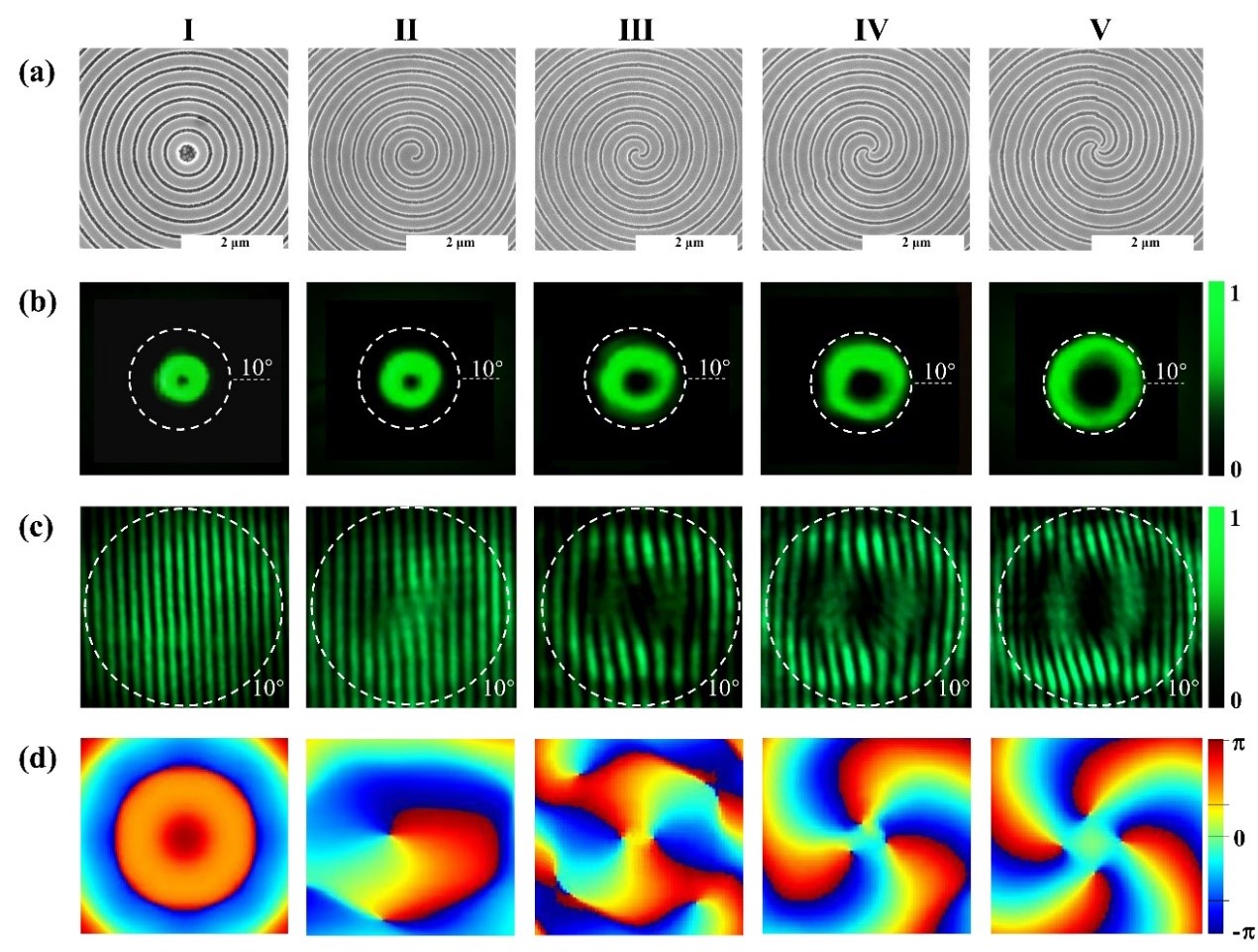We experimentally demonstrate the perovskite vortex microlasers with highly directional outputs and well-controlled topological charges.
Lead halide perovskite microlasers have been very promising for versatile optoelectronic applications. However, most perovskite microlasers are linearly polarized with uniform wavefront. The structured laser beams carrying orbital angular momentum have rarely been studied and the applications of perovskites in next-generation optical communications are thus hindered.
In the past few years, great success has been achieved in on-chip integrated vortex microlasers. Highly directional laser emissions with well-defined topological charge have been experimentally achieved from microring with asymmetrical scatters and the chain of microdisks. In spite of the rapid breakthroughs, the current III-V semiconductor microlasers face the difficulty of being imbedded into modern Si or Si3N4 based photonic integrated circuits (PIC), significantly restricting their practical applications.
We have experimentally fabricated a series of Bullseye grating and Archimedean spiral grating. As shown in Figure 1, high quality gratings have been experimentally fabricated in perovskite film and the subsequent vertical cavity surface emitting lasers (VCSELs) with divergent angles of 3o are achieved.

Figure 1. Schematic diagram of perovskite vortex laser and SEM image of nanostructure
With the control of Archimedean spiral gratings, the wavefront of the perovskite VCSELs has been switched to be helical with topological charges of q = -4 to 4. Figure 2(a) shows the top-view SEM images of these gratings, the far field laser beam profiles from the perovskite spiral gratings are shown in Fig. 5(b). The corresponding self-interference patterns of the forward beam in Fig. 5(c) show 2, 3 and 4 pairs of inverted forks when l =2, 3, 4. These results, associated with the numerically calculated phase profiles in Fig. 5(d).

Figure 2. The MAPbBr3 perovskite VCSELs with different topological charges
This is the first time that perovskite VCSELs can carry OAM with larges topological charges. The developed method can be expanded to larger topological charge by fabricating Archimedean spiral with more arms or spiral ring grating with more notches. We believe this research shall route a way of perovskite optoelectronic devices to on-chip optical network, biological sensing, quantum optics, and optical manipulations as well.